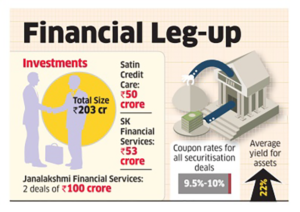
Lax risk management rules have been cited as one of the reasons that led to the NSEL debacle. It is, therefore, not surprising that the current commodity market regulator, the Securities and Exchange Board of India, is focusing on the risk management rules in the commodity exchanges. Early this month, it released a circular that tightened the rules for collecting trading margins on commodity derivative contracts and for contributions to the Trade Guarantee Fund (TGF).
Here, we take a closer look at the changes made to the manner in which the TGF is maintained by the exchanges.
As its name denotes, this fund is used to guarantee the settlement of all bona fide transactions of the members of the exchange. This is the corpus that is used to protect the interest of investors, if there is a large default, thus acting as the primary means of building confidence of investors towards the exchange.
Guaranteeing performance
The TGF is built through various components: a) yearly contribution of the exchanges. This was typically 5 per cent of the gross revenue every year. b) The security deposit paid by members to the exchanges, which is also called the Base Minimum Capital (BMC), c) all the penalties paid by the members to the exchanges in settlement-related issues, d) interest earned by investment of the fund balance in the TGF e) less the amount utilised for meeting the shortfall in member defaults in a year.
The yearly contribution of the exchange and the base minimum capital of members accounts for almost 90 per cent of the TGF. For instance, the TGF balance towards the end of June 2016 was ₹258 crore. Of this, contribution of the exchange accounted for ₹105 crore and BMC (cash as well as non-cash component) was ₹129 crore.
Recent tweaks
SEBI has, through the circular issued on September 1, sought to fortify the TGF maintained by commodity exchanges. This is done in three ways,
One, the BMC or the security deposit paid by members who clear non-algo trades has been increased from ₹10 lakh to ₹25 lakh. Members who also clear algo trades shall, however, continue to maintain BMC of ₹50 lakh. The higher amount of security maintained with exchanges will go towards increasing the TGF. Further, interest earned by investing this incremental amount will also be useful to exchanges.
Two, changes have also been brought about in the contribution made by exchanges to the Trade Guarantee Fund. Currently, the extent of risk is to be assessed every quarter and funds are transferred to the TGF to enable the exchange to handle the risk. The transfers were, however, capped at 5 per cent of the turnover of the exchanges, net of income tax paid. SEBI has now stipulated that the exchanges need not limit themselves to 5 per cent of their turnover in transferring money to this fund.
If the risk of default arises, say, if there is a global crash in commodity prices, then the exchange can transfer much more funds, to brace itself for member defaults.
Three, rules regarding usage of funds in the TGF, in the event of a default, have also been clearly spelt out. SEBI has termed it the ‘default waterfall’.
If a member defaults from payment, then the funds withdrawn from the TGF shall be in the following order – first the security deposit paid by the defaulting member to the exchange (BMC) shall be used to repay clients, then insurance if any, will be claimed. If these are not sufficient, then 5 per cent of the corpus in the TGF can be used for meeting the default. The ulitisation of the TGF shall also follow a certain order; penalties and investment income shall be used first, then exchange contribution to the fund and finally the funds of non-defaulting members shall be used, on a pro-rata basis.
If the default is so huge that even these fall short, ₹100 crore shall be left in the TGF and the remaining paid out. After all this, if there are still some dues remaining, the clients will have to take a pro rata haircut.
The tweaks are welcome and could help in tackling an NSEL-like fiasco in future. But SEBI should also make sure that there are regular audits of the TGF, perhaps on an annual basis, to ensure that these rules are followed by the exchanges.
Source: http://www.thehindubusinessline.com/portfolio/real-assets/readying-comexes-to-take-on-defaulters/article9096891.ece







